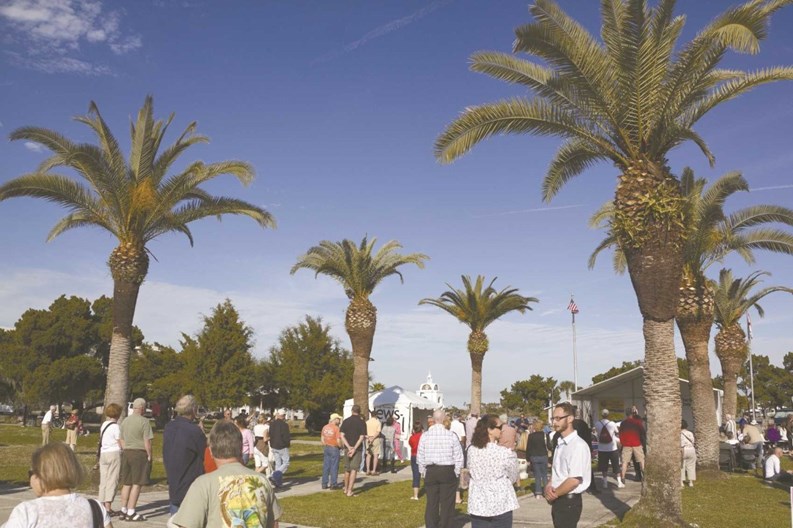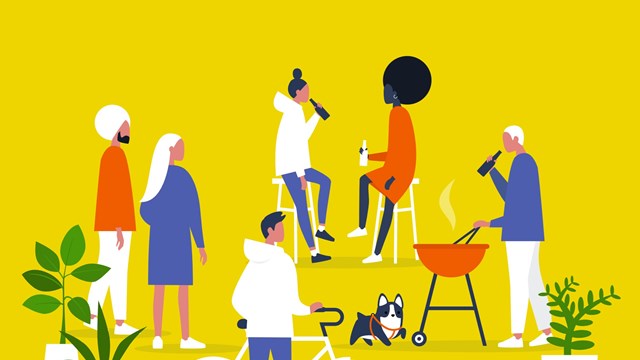When condo association budgets get tight, the logical approach is to cut spending wherever it will hurt the least. No board or property manager wants to reduce services or take away amenities, yet in the fallout from the Great Recession, those kinds of tough decisions have been nearly unavoidable. When times are tough, recreational activities and event planning are often the first casualties. But while this may save money in the short term, it also can hurt a community long-term, reducing its desirability and eroding the sense of neighborliness that made it feel like home.
A number of Florida condo associations have weathered this lingering financial storm not by eliminating activities and community programming altogether, but by coming up with new and innovative approaches that have saved money without sacrificing quality.
Where We Started
In Florida, “Luxury living in a resort-style setting has turned into a year-round passion for many condominium communities, rather than just a seasonal one,” says Marcy L. Kravit, CMCA, AMS, PCAM, general manager of The Galleon Condominium Association in Fort Lauderdale. “The concept of community and a sense of belonging provide positive benefits [to our members.]”
The residents of The Hemispheres condominium community in Hallandale Beach also were used to a full and diverse roster of programming. Its 1,298 residential units have access to two club buildings and a broad range of recreational areas. It is an active community which was able to support an activities director, an assistant and an activities budget in the mid-five figure range.
“As the economy changed for the worse, we started to feel the impact of the defaults,” says Alicia S. Moreno, a member of the board of directors for The Hemispheres Condominium Association, Inc. Cuts became necessary and the activities office was reduced to one person: Moreno, who took on activities duties in addition to her regular position. “Our second step was to decree that activities needed to be self-sustaining.”
In situations such as those, it would be easy to ask the question: why even continue offering activities and programming? Because in some ways, programming can become even more important in a struggling economy when so many residents “are staying home more and curbing their spending on social activities,” Kravit says.
“Why continue with the effort?” Moreno says. “Because while we have to look after the property, the well-being of our residents is a number-one priority. We are a very varied community. We have residents from all parts of the world, from different ethnicities, religions and languages. It is our activities that bring them together, promoting friendship and understanding that could not be achieved otherwise.”
Together for a Common Cause
In some instances, the desire to carry on with community programming provides an outstanding opportunity for residents themselves to get involved. “The Galleon invites members of the association to volunteer by serving on the social committee,” says Kravit. “This is a way for new members to get their feet wet and provide greater owner involvement. Their contributions are welcome [as a way] to enhance the lifestyle of the condominium. The social committee also promotes camaraderie among residents and builds a sense of community. The committee plans events that create a positive association atmosphere where ideas can grow and others can share their ideas.”
At The Hemispheres, volunteers are also making their presence known, pitching in where needed and offering use of their own creative talents for the benefit of their neighbors and friends. “We manage to achieve our goals via an activities committee, which at this time has four members,” says Moreno. In addition to the activities committee, the association also has “a self-sustaining social club that does an outstanding job in providing entertaining and social interaction.” Volunteers also teach arts and craft classes and host game nights.
While a number of residents will no doubt be eager to come forward and lend a hand with programming, activities and entertainment, it is important for staff and the board to back up those who are donating their time. “We provide our volunteers with 100 percent support,” says Moreno.
Often, the planning process itself offers a chance for residents, board members and employees to get to know one another better. It is a good opportunity “for me to learn more about the member’s ideas and vision, and listen to what’s on their mind in a more relaxed setting,” says Kravit. “During these events, I have the opportunity to spend more time in conversation with the residents and learn more about them. Essentially, people want to give, especially if they feel it is needed and worthwhile. Most people want to make a difference in sharing their expertise and experiences. This is also time for all to learn more about each other and encourage members to participate and get involved.”
This volunteerism also enables “committee members to learn how the association operates, supports the community and assists in the needs of the board,” Kravit adds. “The social committee is a powerful, enthusiastic support system in bringing the members together for a positive planned event.” That, in and of itself, is a big boost “to an often overwhelmed board of directors.”
As at The Hemispheres, the activities at The Galleon are not paid for with operating budget funds. The committee operates “solely by obtaining its funds by charging a reasonable, fair fee for the event in advance and an increased rate for those who pay at the door,” Kravit says. “In addition, the committee members ask for donations from local merchants and residents for raffle prizes and sponsor a 50/50 at the event. Many of the events require that the members bring a covered dish and their own beverage.”
Donna Oppert, president of the board of directors of The Galleon, adds that “There is always an opportunity to delegate and share the responsibilities so residents feel they are a part of the team effort.” It builds great collegiality and neighborliness to try and include as many members of the community as possible in all aspects of events and activities. Oppert says, “Reach out to the homebound and shut-ins as they have a wealth of knowledge to share about the history of the community.”
Creative Thinking
With the right creative minds in place, communities such as The Hemispheres are able to do more with less. While their annual budget for activities is now one-third what it was before the recession hit, the community continues to offer fun and engaging entertainment for its residents, the vast majority of which is self-sustaining.
“We have an active schedule of activities, some requiring an entry fee and others offered at no cost,” Moreno says. “We have a show series during the season in which we engage performers and sell tickets for the six performances for $60. These shows pay for themselves.” And every other month, the community stages a dinner dance show. “We sell tickets for $25 and again, they pay for themselves.” Some even provide a small profit, which is reinvested in the activities budget. The community also offers bus trips to various destinations and venues, giving residents a chance to socialize and interact beyond their own doorsteps.
Other gatherings can be smaller in scale, creating a sense of family. “On holiday weekends, we have poolside music as well as treats and programs for children,” Moreno says. “And we offer subsidized classes in art, yoga and zumba. We are bringing in performers for candlelight poolside concerts, which are free for residents. This is all achieved within the budget and our activities budget is only .2 percent of our operating budget.”
Often, volunteers are eager to offer more than just their time to the activities cause. At The Galleon, “One of our owners performed on The Ed Sullivan Show and sings in a local band,” Kravit says. “She and the band performed on-site in the social room. A member of the association volunteered to pay for the food and the cost was a minimal $15. The event was a hit.”
One key to social outings is to give people ample notice of upcoming activities. “Announcements for these activities are included in the newsletter and notices are posted throughout the community,” Kravit says. “A social calendar is also posted in the mailroom.”
And when events are a success, it is often a good idea to record the event for those who could not attend. “Have a photographer at each event for family, friends and residents to share with each other and with the newsletters,” Oppert adds. They are able to “have entertainment to enjoy with each other and reminisce about times gone by.”
Despite the challenges created by the economic upheaval of the last few years, condo associations are working hard to find ways around these issues while never sacrificing quality and creativity. “This has been a very positive process in improving the quality of life for all residents,” Kravit says. “Oliver Wendell Holmes says that it is important to be able to listen to others in a sympathetic and understanding manner. It is the most effective manner in the world for getting along with people. The social events are an important aspect in cultivating community.”
“We have proven that a limited budget,” Moreno explains, “does not have to mean the end of the social life of a community.”
Liz Lent is a freelance writer and a frequent contributor to The South Florida Cooperator.







Leave a Comment